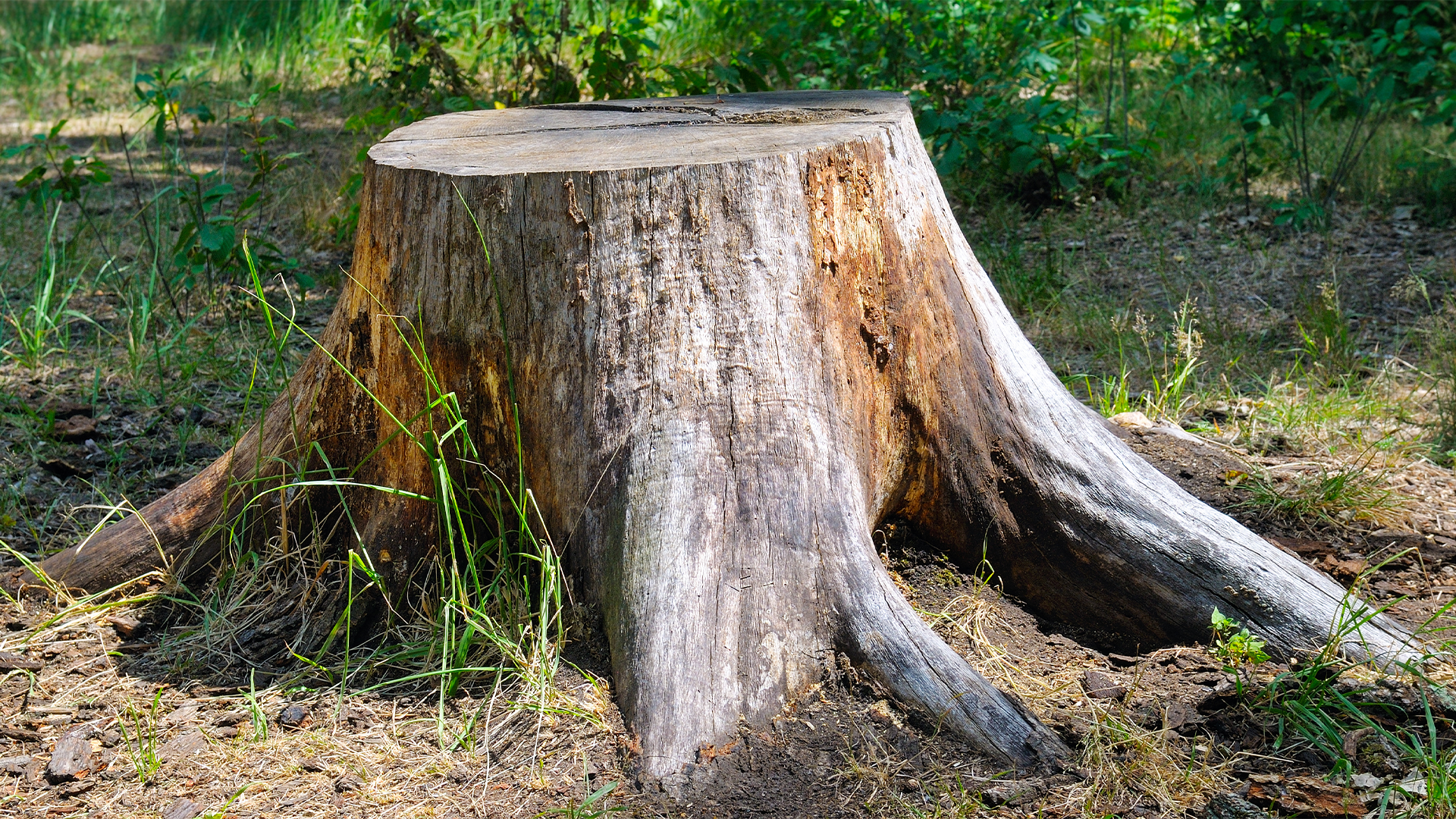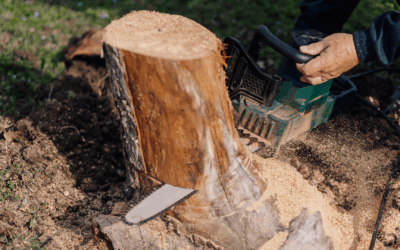
Many homeowners wonder if they can simply leave an old tree stump to rot naturally instead of going through the hassle of removing it. The short answer? Yes, a stump will eventually decay, but the process can take years and comes with several risks.
Tree stump decay (also known as tree stump rot) is a natural process caused by moisture, fungi, insects, and exposure to the elements. While it’s an option, waiting for complete decomposition may lead to pest infestations, safety hazards, or unwanted regrowth.
In this blog, we’ll cover how long stump rot typically takes, what factors affect the timeline, how to speed it up, and when professional stump grinding might be the smarter solution.
Quick Answer – How Long Does It Take for a Stump to Rot?
On average, a tree stump can take anywhere from 3 to 10 years to rot naturally, depending on the tree type, size, environment, and whether decay is helped along by fungi or accelerants. If you want it gone faster, professional stump grinding or chemical stump removal can significantly reduce that timeline.
What Is Tree Stump Decay?
Tree stump decay is the natural breakdown of wood over time. Once a tree is cut down, the remaining stump becomes exposed to oxygen, moisture, insects, fungi, and microbes, all of which begin to decompose the organic material.
As the stump decays, it may soften, hollow out, or attract visible fungal growth. This slow process is nature’s way of recycling, but for homeowners, it can be more of a nuisance than a benefit.
💡 Not sure what to do with that leftover stump? Check out our full guide: 7 Things You Need to Know about Removing a Stump »
How Long Does It Take for a Tree Stump to Rot Naturally?
The timeline for tree stump decomposition can vary widely based on several factors:
- Tree species – Hardwood trees (oak, maple) decay slower than softwoods (pine, cedar).
- Climate – Warm, humid conditions accelerate decay, while dry, cold weather slows it down.
- Stump size – Larger stumps take longer to rot completely.
- Soil conditions – Moist, well-aerated soil promotes microbial activity.
- Exposure – Shaded stumps with limited airflow may decompose slower.
In most Mid-Missouri environments, a stump can take anywhere from 3 to 10 years to fully rot on its own.
Why You Shouldn’t Leave a Tree Stump to Decay
Waiting for natural stump rot might sound convenient, but it comes with serious downsides:
- Pest problems – Rotting wood is a magnet for termites, carpenter ants, and rodents.
- Fungal growth – Mushrooms and harmful fungi can pose risks to pets and kids. Learn how we treat tree diseases »
- Tripping hazards – As the stump softens and weakens, it becomes a hidden safety risk.
- Regrowth – Some trees can sprout new shoots from the stump.
- Curb appeal – A decaying tree stump is unsightly and lowers property value.
💡 Thinking of letting that stump rot on its own? See why that might be a mistake: Six Reasons to Remove Tree Stumps »
How to Speed Up the Stump Decay Process
If you’re set on DIY rotting methods and wondering how to speed up the process, here are ways to accelerate stump decomposition:
- Drill holes in the stump – Create deep holes to allow air, moisture, or chemicals to penetrate.
- Apply nitrogen-rich substances – Compost, manure, or commercial stump rot accelerators feed the microbes that break down wood.
- Keep it moist and covered – Use a tarp to retain warmth and moisture, ideal for fungal growth.
- Use chemical stump removers – Products like potassium nitrate can speed up decay, but must be handled safely.
⚠️ Keep in mind: These methods may take months or even years to work.
💡 Wondering if DIY is the best approach? Compare pros and cons in our full guide: DIY Stump Removal vs Hiring a Pro »
Fast Alternatives: Stump Grinding or Removal
For homeowners who don’t want to wait, there are two fast, professional solutions:
1. Stump Grinding
- Removes the visible stump down to several inches below the ground.
- Quick, affordable, and causes minimal landscape disruption.
- Allows for replanting or turf installation soon after.
2. Stump Removal
- Complete extraction of the stump and roots.
- Ideal for full landscaping renovations or preventing root regrowth.
- Requires more labor and equipment, but leaves a clean slate.
💡 Not sure which removal method is best? Explore the differences: Stump Removal vs Grinding »
Looking for tree stump removal in Missouri? Whether you need stump grinding in Columbia MO or stump removal in Jefferson City, Hentges Tree Service has you covered.
FAQ – Tree Stump Decay Questions Answered
Q: Will a tree stump eventually rot?
Yes, all tree stumps will eventually rot over time. However, depending on factors like tree type, soil conditions, and climate, full decomposition can take anywhere from 3 to 10 years without intervention.
Q: How do you know a stump is rotting?
Signs of decay include soft or crumbling wood, the presence of mushrooms or fungal growth, and increased insect activity around the stump. The stump may also develop a hollow center as it breaks down.
Q: Is it better to leave a stump or grind it?
Stump grinding is faster, safer, and avoids long-term issues like pests or regrowth. Leaving a stump may be cheaper in the short term, but it often leads to problems with landscaping and property value.
Q: Will drilling holes make it rot faster?
Yes. Drilling holes into the stump allows moisture, fungi, or chemical stump removers to penetrate deeper, significantly speeding up the rotting process.
Work With Missouri’s Trusted Stump Removal Experts
Rotting stumps might disappear eventually, but do you really want to wait 3 to 10 years and deal with pests, regrowth, or safety hazards?
At Hentges Tree Service, we offer fast, professional stump grinding and removal services across Jefferson City, Columbia, and surrounding Missouri areas. Our local team brings experience, safety, and efficiency to every job.
💡 Need help beyond stump removal? Explore our full range of tree services in Mid-Missouri »
👉 Contact us today to schedule a free estimate and reclaim your yard.
DO YOU NEED HELP?
We’re here to serve you and we provide free estimates.



